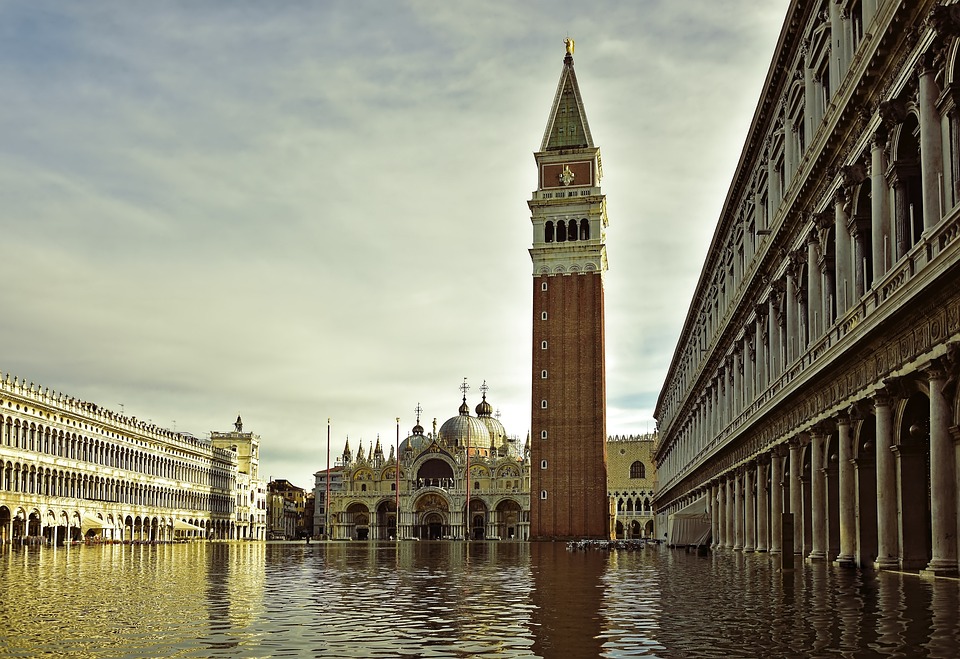How Does the Ocean Conveyor Belt Affect Climate? Understanding the Role of Thermohaline Circulation in Global Climate Patterns
The ocean conveyor belt, also known as thermohaline circulation, is a crucial component of Earth’s climate system. It circulates warm and cold water across the globe, significantly influencing weather patterns and climate stability.
What Is the Ocean Conveyor Belt?
Definition of Thermohaline Circulation:
Thermohaline circulation refers to the large-scale movement of ocean water driven by differences in temperature (thermo) and salinity (haline). These variations create density gradients that propel water currents throughout the world’s oceans.
Structure of the Conveyor Belt:
The conveyor belt consists of warm surface currents that move toward the poles. As these currents reach higher latitudes, they cool, become denser, and sink to deeper ocean layers. This cold, dense water then flows back toward the equator at greater depths, completing a global circuit that can take about 1,000 years to complete.
Regions Involved:
Key regions where thermohaline circulation operates include:
– North Atlantic (particularly around Greenland and Iceland)
– Southern Ocean (surrounding Antarctica)
– Indian and Pacific Oceans
How the Ocean Conveyor Belt Distributes Heat
Transporting Warm Water to Polar Regions:
Warm currents, such as the Gulf Stream, carry heat from tropical regions toward the poles. This process warms coastal areas like Western Europe, significantly affecting their climate.
Cooling and Sinking at High Latitudes:
At high latitudes, cold, dense water sinks and releases heat into the atmosphere. This exchange is vital for regulating regional temperatures and contributes to milder winters in areas like northern Europe.
Impact on Mild Winters in Coastal Areas:
The heat distribution from the ocean conveyor belt moderates temperatures in coastal regions, preventing extreme cold during winter months.
The Ocean Conveyor Belt’s Influence on Climate Patterns
Stabilizing Global Temperatures:
By redistributing heat from equatorial regions to colder areas, thermohaline circulation helps balance temperature extremes globally.
Impact on Rainfall and Weather Patterns:
Warm currents increase humidity and rainfall in coastal areas, while cold currents can lead to drier conditions. This variability affects agricultural patterns and freshwater availability.
Effects on Ocean Ecosystems:
Nutrient-rich cold water rises in certain areas due to upwelling, supporting marine life crucial for food security and biodiversity.
Potential Disruptions Due to Climate Change
Warming and Freshwater Dilution:
Climate change is leading to increased freshwater influx from melting ice and rainfall. This freshening of ocean waters disrupts salinity levels essential for maintaining thermohaline circulation.
Consequences of Slowed Circulation:
A slowdown in circulation could result in:
– Colder winters in Europe
– Altered monsoon patterns
– Disrupted fisheries and marine ecosystems
Feedback Loops with Global Warming:
A weaker conveyor belt may reduce heat transport to higher latitudes, potentially leading to colder temperatures in the Northern Hemisphere and exacerbating climate variability.
Importance of the Conveyor Belt in Climate Regulation
Key to Climate Stability:
Thermohaline circulation has maintained climate stability for millennia by redistributing heat globally. Its disruption could lead to significant climate shifts.
Impacts on Coastal Communities and Economies:
Changes in the conveyor belt can affect local climates, agricultural productivity, and economies reliant on stable weather patterns.
Need for Monitoring and Research:
Ongoing research is essential to track changes in thermohaline circulation and predict potential disruptions caused by climate change.
FAQs
– What is the main driver of the ocean conveyor belt?
The main drivers are temperature differences and salinity levels that create density gradients in ocean water.
– How does the Gulf Stream affect European climate?
The Gulf Stream transports warm water toward Europe, moderating its climate and preventing extreme cold winters.
– What happens if the ocean conveyor belt slows down?
A slowdown could lead to regional cooling in Europe, altered weather patterns globally, and impacts on marine ecosystems.
– How does salinity influence ocean circulation?
Salinity affects water density; changes can disrupt sinking processes critical for maintaining thermohaline circulation.
– Is the ocean conveyor belt connected to El Niño?
While both involve ocean currents, El Niño primarily affects surface temperatures and weather patterns rather than deep-water circulation.
– Can human activities directly impact the conveyor belt?
Yes, human-induced climate change through greenhouse gas emissions contributes to warming oceans and freshwater influx that can disrupt circulation.
– What are the signs of a potential slowdown in the conveyor belt?
Indicators include rising sea surface temperatures in the North Atlantic, increased freshwater input from melting ice, and observed changes in marine ecosystems.
Conclusion
The ocean conveyor belt plays a vital role in regulating global climate by redistributing heat and influencing weather patterns. Understanding its mechanisms is crucial as climate change poses significant risks to this essential system. Preserving thermohaline circulation is imperative for maintaining climate stability worldwide.

Kyle Whyte is a notable scholar and professor at the University of Michigan, holding positions such as the George Willis Pack Professor in the School for Environment and Sustainability and Professor of Philosophy. Specializing in environmental justice, his work critically examines climate policy and Indigenous peoples’ ethics, emphasizing the nexus between cooperative scientific endeavors and Indigenous justice. As an enrolled Citizen Potawatomi Nation member, he brings a vital perspective to his roles as a U.S. Science Envoy and member of the White House Environmental Justice Advisory Council. His influential research is supported by various prestigious organizations including the National Science Foundation, and disseminated through publications in high-impact journals. Kyle actively contributes to global Indigenous research methodologies and education, with affiliations to numerous institutes and societies dedicated to traditional knowledge and sustainability. Recognized for his academic and community engagement, Kyle has earned multiple awards and served in various visiting professorships. His efforts extend to leadership positions on boards and committees focused on environmental justice nationwide.
